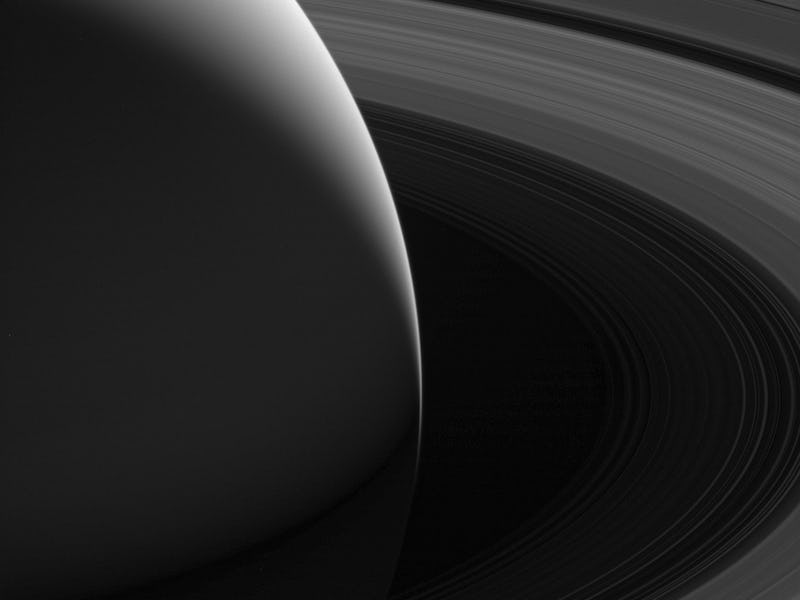Saturn's Rings Have Some Seriously Chilling Ice Peaks
No, you can't ski in space.

If you think the craggy peak of Mount Everest or the snow-capped summit of Mount Fuji are stunning, look to Saturn for the coolest parts of Earth reproduced out in the cosmos.
The picture below depicts some of the tallest peaks observed in Saturn’s B ring system, jutting as high as 1.6 miles (2.5 kilometers). This phenomenon in the planet’s bands was captured by NASA’s Cassini spacecraft, which orbited the gas giant for 13 years until its mission came to an end in September 2017.
Join our private Dope Space Pics group on Facebook for more strange wonder.
While this interplanetary mountain range might seem like fresh powder resting atop rock formations, it’s anything but solid. Saturn’s many rings are made up of ice and rock particles that can be as infinitesimal as a micrometer or as large as couple of meters. These particles are constantly shifting and changing positions due to the gravitational force of multiple or small natural satellites orbiting Saturn — known as moonlets. Think of them like a sedimentary hula hoop constantly dancing around the celestial body.
Saturn's B Ring and its "snowy peaks."
Icy peaks like these aren’t terribly common. Normally, Saturn’s ring plane is about ten meters thick, but these tower over its other bands. They’re so tall that they cast a dramatic shadow that looks like something drawn by a seismograph.
The space between Saturn’s A and B rings — called the Cassini Division — seen at the top of the image is home to many of these moonlets. It’s possible that when these satellites pass by the rings, they lift the ice and rock particles in a splashing manner.
So if you were suddenly feeling inspired to take a ski trip in outer space, save yourself the trouble. You’d float right through…or faceplant on a hunk of ice.